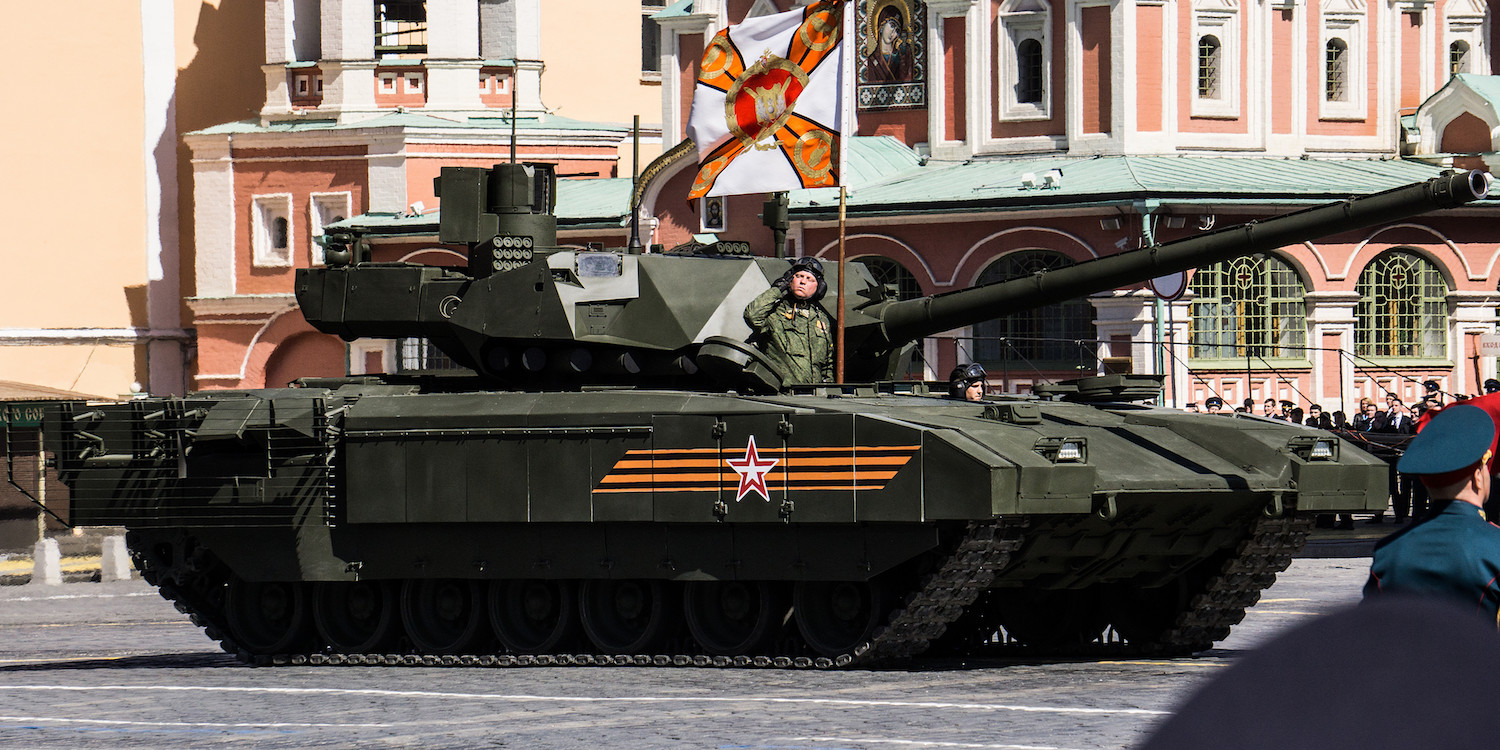Russian Deputy Defense Minister Yuri Borisov said in early February that Moscow ordered two battalions of T-14 Armata tanks and one battalion of T-15 infantry fighting vehicles.
The T-14 and T-15 are part of Russia’s new Armata universal chassis system, which serves as a platform for up to 13 tracked armored vehicles, including the self-propelled Koalitsiya-SV howitzer, according to The Diplomat.
Initially, Moscow said it would put 2,300 T-14s into service by 2020, but because of budget constraints, scaled it back to 100 tanks by 2020. The two battalions of the T-14 already ordered would consist of 80 tanks.
As such, the T-14’s capabilities are not yet fully realized, since Russia only has 20 prototypes, and is still testing the platform.
Here's what we know:
Developed by Uralvagonzavod and unveiled at the 2015 Victory Day Parade, the T-14 is powered by a 1,200 horsepower A-85-3A turbocharged diesel engine, and has a maximum speed of 55 mph.

Source: army-technology.com
It's equipped with a 125mm 2A82-1M smoothbore gun that can also fire 3UBK21 Sprinter laser-guided missiles up to 7.4 miles away.

The US-made M1 Abrams' M256 120-millimeter smoothbore gun, on the other hand, only has a maximum range of 2.48 miles.
The T-14's main gun could also be replaced with a 2A83 152mm gun in the future.
Source: army-technology.com, Popular Mechanics
But the 125mm gun's incredible range might not always prove that handy.

"In real-world war situations, though, there are rarely situations where two objects at ground level are visible to one another at seven and a half miles," Popular Mechanics previously reported. "Outside of the plains of Kansas, the Russian steppes, and the Sinai desert, there are seldom places where two objects are visible at even three or four miles."
The T-14 is also fitted with a Kord 12.7mm machine gun and a PKTM 7.62mm machine gun.

Source: army-technology.com
Its 125mm gun is fitted on an unmanned turret in the center of the hull, which is fed by an automatic loader and carries 45 rounds of ammunition.

The automatic loader, however, might run into problems in the field, which you can read about here.
Source: army-technology.com
The T-14's hull itself has three different sections: a crew cab in the front, the turret in the center, and a power-pack in the back.

Source: army-technology.com
The front of tank is fitted with reactive armor, and the back is fitted with bar armor for extra protection from RPGs.

Source: army-technology.com
It even sports new Afghanit active protection system, which has a radar and electronic system that disrupts incoming guided missiles.

The APS can also jam laser guided systems and even has interceptors that can take out RPGs, missiles, and possibly kinetic rounds - although the latter has been questioned by many analysts.
Source: The National Interest
The T-14 also has nuclear, biological and chemical protection, along with automatic smoke grenade dischargers.

Despite so many strong layers of defense and reactive armor, "no tank is invincible, it is only more survivable," Michael Kofman, a CNA analyst, previously told Newsweek. "It's somewhat unclear how effective these defensive systems are against top-down attack missiles like the FGM-148 Javelin, which is expensive but effective."
Source: Newsweek, army-technology.com
Despite these many impressive capabilities, the T-14 is years away from full-scale production.

"It's important to remember that the Armata platform is still a prototype undergoing field trials and not a completed system," Kofman previously told Newsweek. "There is still a debate in Russia on what its capabilities should be and the initial serial production run of 80-100 tanks is doubtfully going to be the final variant, so we should reserve judgment."

